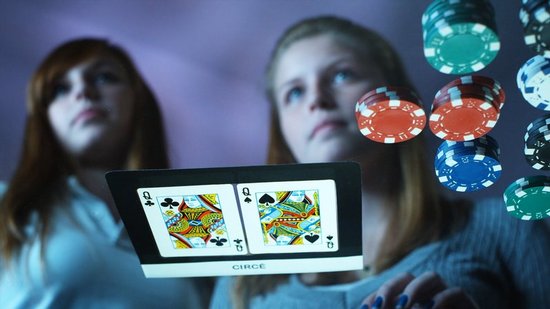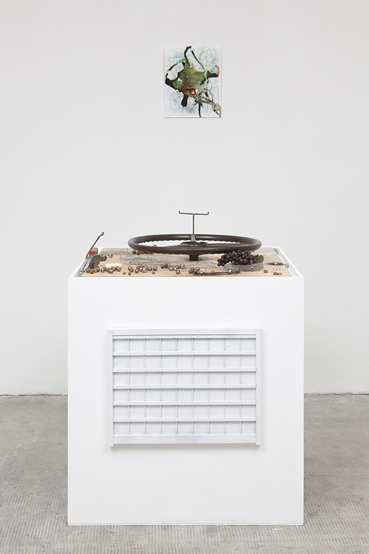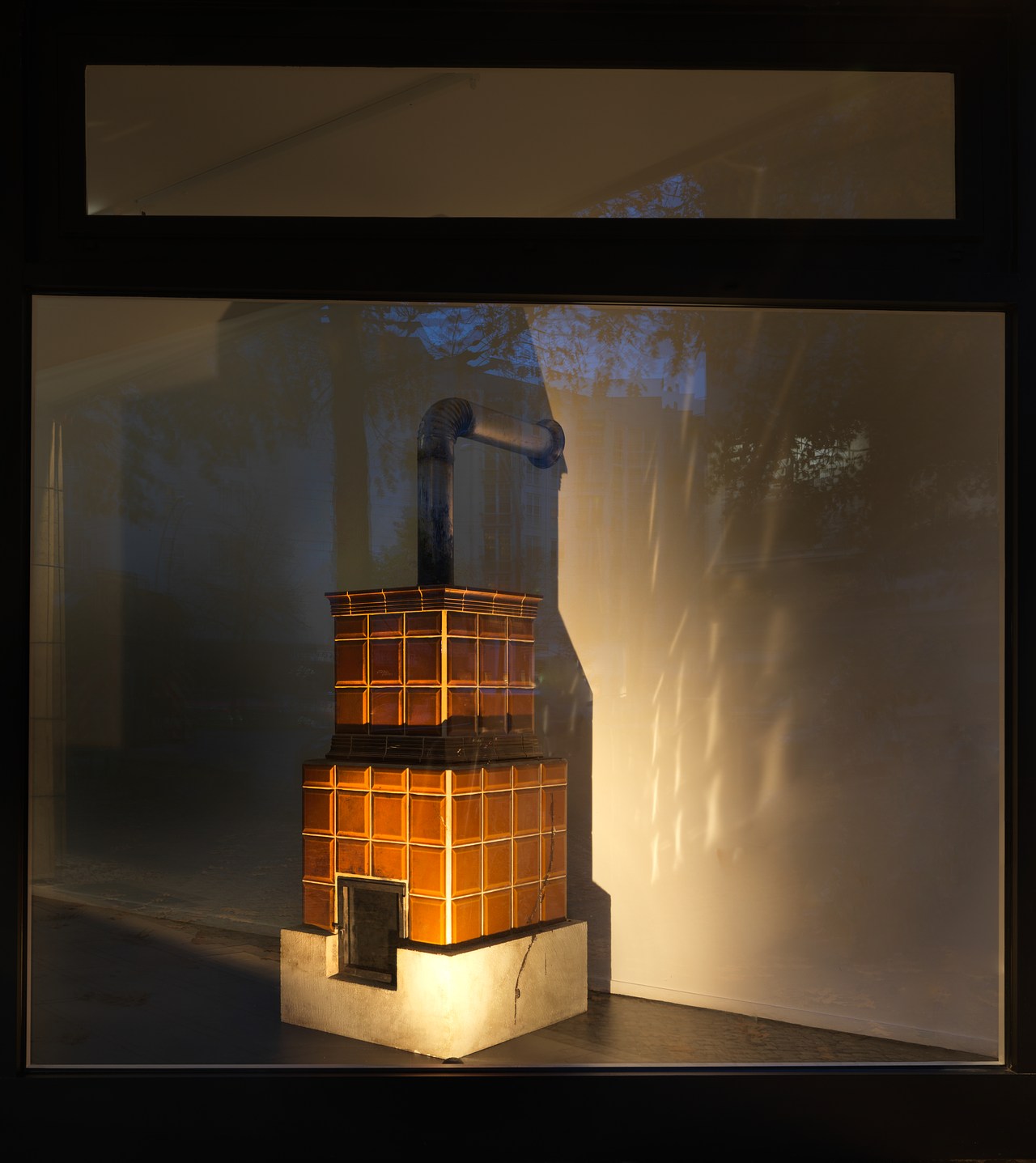
© » KADIST
Marwan Rechmaoui
Drawing & Print (Drawing & Print)
Throughout his career, Marwan Rechmaoui has maintained a drawing practice. During the Covid-19 pandemic lockdowns the artist spent his evenings recording thoughts and imagery on paper, inspired by events happening around him, music, his garden, and the news. These drawings are contemporaneous in their concerns and are indexical of a destitute time and space in the aesthetics they conjure.

© » KADIST
Marwan Rechmaoui
Drawing & Print (Drawing & Print)
Throughout his career, Marwan Rechmaoui has maintained a drawing practice. During the Covid-19 pandemic lockdowns the artist spent his evenings recording thoughts and imagery on paper, inspired by events happening around him, music, his garden, and the news. These drawings are contemporaneous in their concerns and are indexical of a destitute time and space in the aesthetics they conjure.

© » KADIST
Marwa Arsanios
Carlton Hotel project is the second part of a research on the Carlton, an iconic building of modernist architecture from the 1960s in Beirut. Designed by Polish architect Karol Shayer, it was destroyed in 2008 (date of the project’s creation). This project is multifaceted, always transforming into different forms and involving a series of collaborations: the first step took place as part of the “traveling curtains project”, which consisted in recuperating the curtains from the Carlton hotel before its demolition and sending them to different cities throughout the world where they would be subject to new interventions and transformations by artists, among whom Marwa Arsanios.

© » KADIST
Martin Creed
This photograph of Martin Creed himself was used as the invitation card for a fundraising auction of works on paper at Christie’s South Kensington in support of Camden Arts Centre’s first year in a refurbished building in 2005. His broad smile, on the verge of laughter, encourages reciprocity on behalf of the onlooker. This could be said to be a typical tactic in Creed’s work as it is so infused with humor and irony.
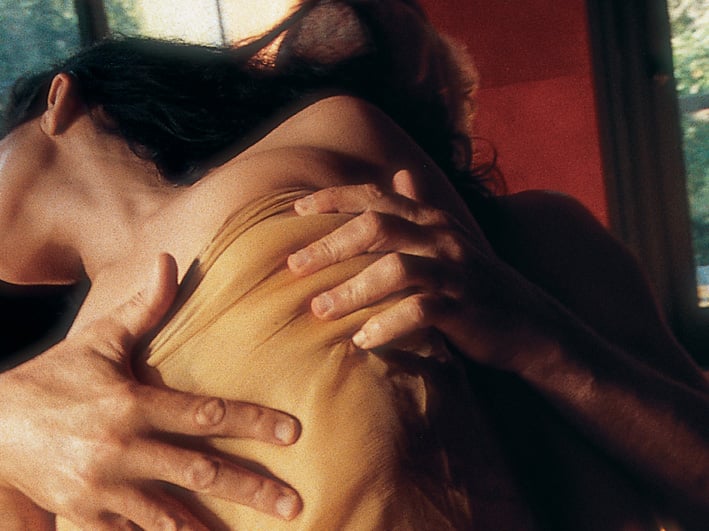
© » KADIST
Daria Martin
In keeping with her mythological proclivity, Minotaur (2009) casts a new light on an old narrative. The film takes the ancient Greek story of the half-man, half-bull as its title subject, but at its core, Minotaur is an homage to pioneering modern dancer and choreographer, Anna Halprin. Along with Trisha Brown, Simone Forti, and Yvonne Rainer, Halprin’s fearless and lifelong dance practice paved the way for the evolution of modern and contemporary dance as we understand it today.

© » KADIST
Maryam Hoseini
Secrets Between Her and Her Shadow 10 by Maryam Hoseini is from a series of paintings of the same title that are inspired by the story Layla and Majnun – an Arabic love story about Majnun, a 7th century Bedouin poet, and his lover, Layla. Hoseini’s compositions are visually inspired by the illustrations accompanying the Khamsa of Nizami , a manuscript of five poems, including Layla and Majnun , produced by the Persian poet Nizami in the 1590s. Unlike the original tale, Hoseini’s paintings focus entirely on Layla, any male characters are purposefully erased from this narrative.
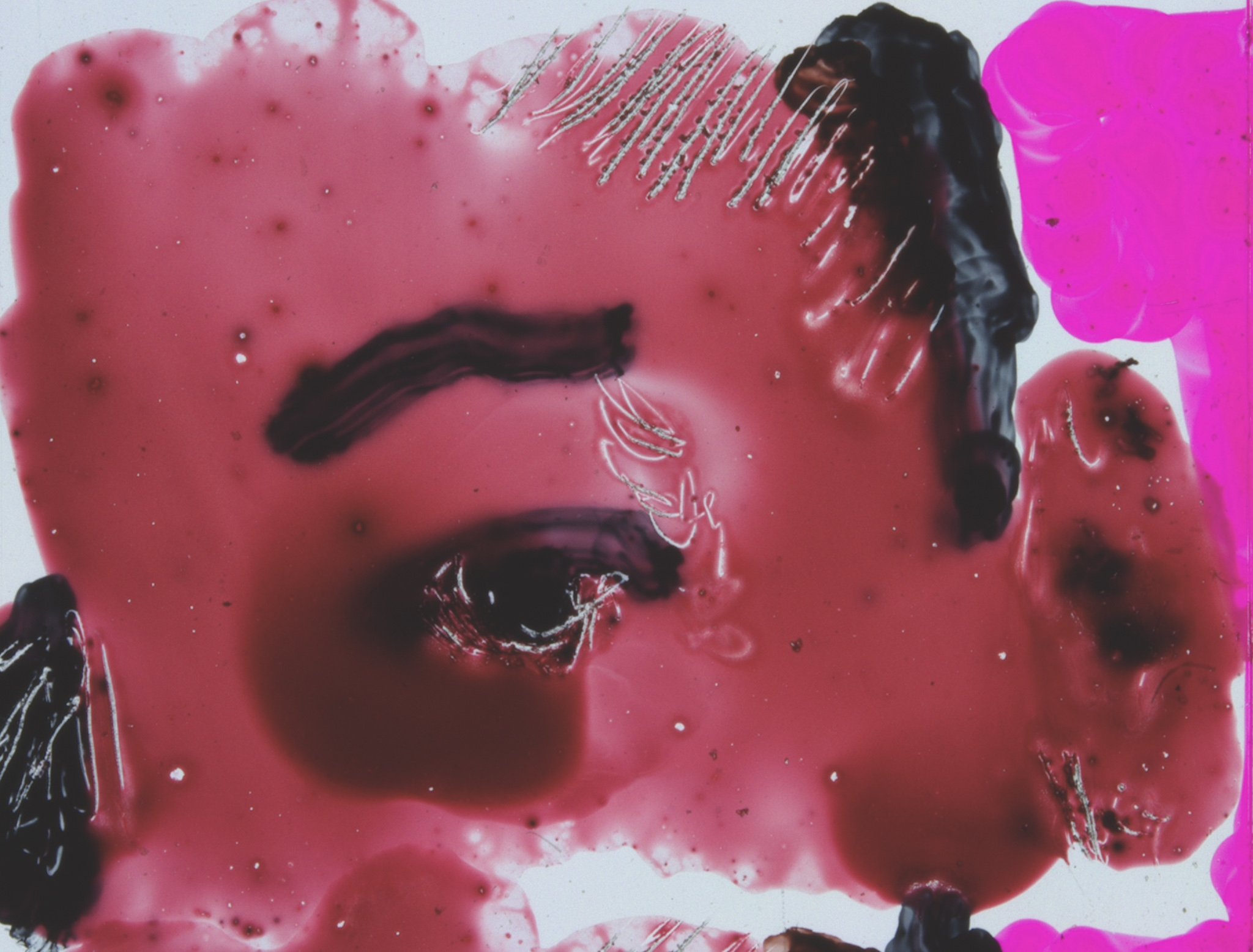
© » KADIST
Diego Marcon
The video animation Falling Head 2 , hand-painted by Diego Marcon in 2015, consists of a close-up of a head caught on the threshold between sleep and wakefulness or maybe from wakefulness to sleep. The film is projected as a ten-second loop where the first and last frames coincide. Working mainly in video and film, Marcon is familiar with the consequences of eyestrain.

© » KADIST
Diego Marcon
Monelle by Diego Marcon was filmed at night inside the infamous Casa del Fascio, the headquarters of the local Fascist Party in Como Italy, designed by Giuseppe Terragni under Mussolini’s rule. The building is immersed in darkness and it is initially difficult to recognize the iconic rationalist architecture, flashes of light illuminate languid adolescent girls sleeping amidst the space for just a few seconds at a time. Next to the bodies, strange humanoids are lurking, they are CGI-generated, but the human eye does not have enough time to register their artificiality, they materialize and disappear in a flash like ghosts.

© » KADIST
Marina Rosenfeld
The installation Music Stands: Free Exercise 7, 8, and 9 by Marina Rosenfeld consists of music stand-like structures and a corresponding set of panels and acoustic devices that direct, focus, obstruct, reflect and project sound in the gallery. Together the components play on the connection between aural and social relations signified by the music stands. An episodic score emanates from the work’s sound system, momentarily interrupting the atmosphere with brief eruptions of electronic sounds and vocality.
![A World Undone [Protolith]](https://kadist.org/wp-content/uploads/2017/11/IMG_Installation-view-3_WEB.jpg)
© » KADIST
Nicholas Mangan
Executed in 2012, A World Undone revolves around a single, metaphorically rich substance, drawing on geological research into an ancient mineral, Zircon, unearthed in remote Western Australia. These rocks are now studied, like a time capsule, revealing intriguing clues about the state of the planet more than 4 billion years ago. Mangan procured a sample of the material and reduced it to a fine dust that he then filmed, in flux, with a high-speed video camera.
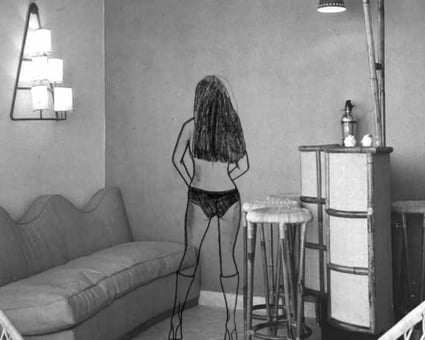
© » KADIST
Marwa Arsanios
I’ve heard stories (2008) is one of Marwa Arsanios early works. It is a short animated film staging a story that took place at the Carlton hotel in Beirut. This work is the first part of a longer project on this iconic building.

© » KADIST
Karan Shrestha
After the decade-long conflict (1996-2006) that ended with Nepal becoming a Federal Democratic Republic, political unrest and weak governance continued to mark the country’s future as daily life repeatedly witnessed ruptures. From accessing essentials to employment, education, compensation, legal justice, health facilities, and human rights, the people of Nepal have been forced to wait. Meanwhile by Karan Shrestha records moments of impasse as the post-conflict period dragged on.

© » KADIST
María Buenaventura
The Territory is not for sale is a process of reflection and research with people, thinkers and community leaders from Usme, a rural part of Bogotá on the tenuous verge of becoming urban. As an art object and installation, it comprises multiple stacks of paper each containing the decrees of land expropriation from many different peasant farmers who are being forced to sell their lots of land back to the government. Usme lies at the southern urban-rural border strategically located next to the Páramo de Sumapaz, an enormous neo-tropical tundra ecosystem and water reserve.

© » KADIST
Martin Kippenberger
Drawing & Print (Drawing & Print)
7″ Single ‘Pop In’ by Martin Kippenbergher consisting of a vinyl record and a unique artwork drawn by the artist on the record’s sleeve. In the foreground of the album’s cover, a drawing of an empty, round vessel is framed underneath the text “POP IN”, suggesting an invitation to listen to the record, a nod to pop music, or perhaps a literal proposal to enter the vessel or the work. In the background, partly hidden by the round form, Kippenberger’s hand-drawn self portrait glares back at the viewer.

© » KADIST
Martin Boyce
In the installation Our Love is like the Flowers, the Rain, the Sea and the Hours, Martin Boyce uses common elements from public gardens – trees, benches, trashbins– in a game which describes at once a social space and an abstract dream space. The trees, unique sources of light in the exhibition space, produce their own environment. These sculptures, as if extracted from a set, are enough to suggest an atmosphere, a landscape, or a movie.

© » KADIST
Daria Martin
Soft Materials is a curious, touching but also disturbing sequence of confrontations between two people: a man and a woman, and machines. Shot in the Artificial Intelligence Laboratory at the University of Zurich, the humans and the machines mirror each other’s actions. It is unclear which party takes the lead.
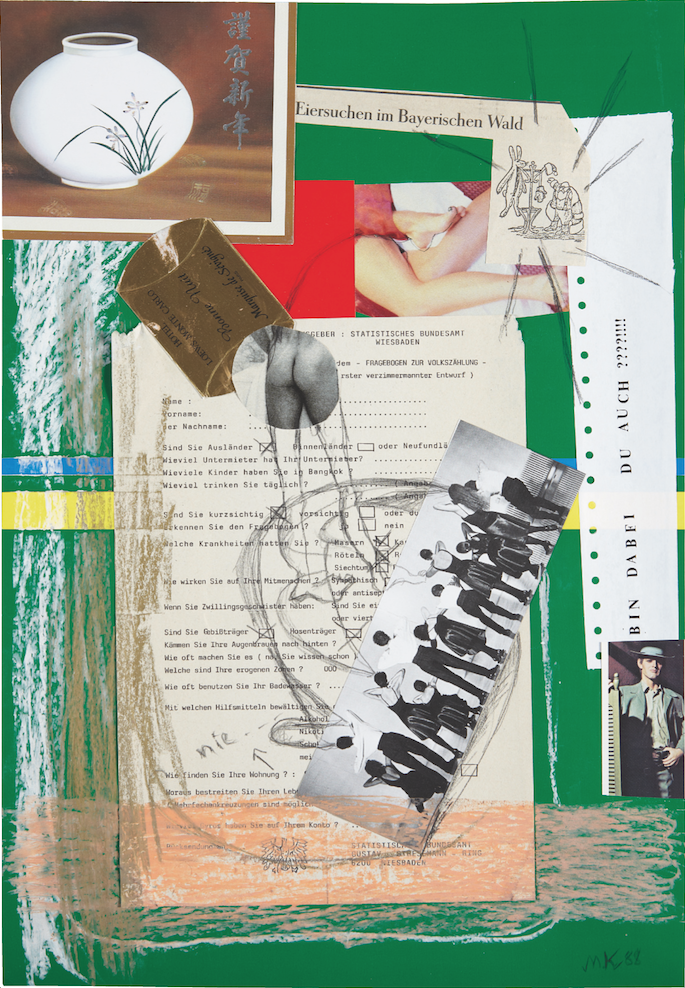
© » KADIST
Martin Kippenberger
Martin Kippenberger’s late collages are known for incorporating a wide range of materials, from polaroids and magazine clips to hotel stationery, decals, and graphite drawings. Untitled is a collage on paper work by Kippenberger that typifies his everything-goes approach: a barely discernible, sliced image of Michael Jackson’s face is overlaid and woven with strips and triangular shapes from a different source into a single composition. Blue tones come from torn out pages of a book where fragments of illustrations can be seen.

© » KADIST
Martin Kippenberger
Drawing & Print (Drawing & Print)
Untitled is a work on paper by Martin Kippenberger comprised of several seemingly disparate elements: cut-out images of a group of dancers, a japanese ceramic vase, and a pair of legs, are all combined with gestural, hand-drawn traces and additional elements such as a candy wrapper from a hotel in Monte Carlo and a statistical form from a federal government office in Wiesbaden, Germany. Text cut out from a Newspaper spells out in German “Egg hunting in the Bavarian forest” and an additional piece of text reads in all capitals “BIN DABEI DU AUCH” (“I’m here too” in English). Together, all the messages and geographies from the separate elements suggest an alternative, highly stylized portrait of the artist; in this case, a fragmented, fluid, and itinerant sense of identity.

© » KADIST
Mariana Castillo Deball
Taking archaeology as her departure point to examine the trajectories of replicated and displaced objects, “Who will measure the space, who will tell me the time?” was produced in Oaxaca for her exhibition of the same title at the Contemporary Museum of Oaxaca (MACO) in 2015. The sculpture, employing the technique of traditional Atzompa pottery originating from Oaxaca, Mexico, is an examination of the way in which archaeological heritage is remembered in the earthenware made by Atzompa potters today. Accompanied by the publication ‘Ixiptla Vol.

© » KADIST
Marion Scemama, David Wojnarowicz
Political artist, painter, writer, performer, photographer, David Wojnarowicz, was one of the leading figures of the New York Downtown artistic scene of the 1980s. His use of image, language and collage generated a new method of idea communication. The series of five videos Collaborative Film Collection made in collaboration with Marion Scemama in 1989 is emblematic of his artistic practice, it unfolds through performance, films, photographs, texts and paintings.

© » KADIST
Marion Scemama, David Wojnarowicz
Political artist, painter, writer, performer, photographer, David Wojnarowicz, who died of AIDS in 1992 in New York City, was one of the leading figures of the New York Downtown artistic scene of the 80s. His use of image, language and collage generated a new method of idea communication. The series of five videos Collaborative Film Collection made in collaboration with Marion Scemama in 1989 is emblematic of his artistic practice, it unfolds through performance, films, photographs, texts and paintings.

© » KADIST
Marion Scemama, David Wojnarowicz
Political artist, painter, writer, performer, photographer, David Wojnarowicz, who died of AIDS in 1992 in New York City, was one of the leading figures of the New York Downtown artistic scene of the 80s. His use of image, language and collage generated a new method of idea communication. The series of five videos Collaborative Film Collection made in collaboration with Marion Scemama in 1989 is emblematic of his artistic practice, it unfolds through performance, films, photographs, texts and paintings.

© » KADIST
Marlon de Azambuja
Following a series of related works, Brutalismo Americano by Marlon de Azambuja is a site-specific sculptural installation produced during the artist’s residency at Kadist, San Francisco in 2017. Treating the city as an object of attention, de Azambuja collected building materials from the surrounding area over a period of ten days to conceive of an architecture in situ. The work is not meant to mimic any of San Francisco’s own architecture, or to be a maquette or portrait of the cityscape, but instead a singular, constructive gesture.

© » KADIST
Marion Scemama, David Wojnarowicz
Political artist, painter, writer, performer, photographer, David Wojnarowicz, who died of AIDS in 1992 in New York City, was one of the leading figures of the New York Downtown artistic scene of the 80s. His use of image, language and collage generated a new method of idea communication. The series of five videos Collaborative Film Collection made in collaboration with Marion Scemama in 1989 is emblematic of his artistic practice, it unfolds through performance, films, photographs, texts and paintings.

© » KADIST
Maria Taniguchi
Untitled (Celestial Motors) is a visual meditation on an icon of modern urban Philippine life—the jeepney. This ubiquitous form of public transportation, originally built from U. S. military jeeps left on the islands after World War II, is normally exuberantly painted and personalized. They are known for their crowded seating and kitsch decorations, which have become an omnipresent symbol of Philippine culture.

© » KADIST
Maria Bussman
Drawing & Print (Drawing & Print)
The drawing “Heidegger’s Cabin” (2005) is inspired by Martin Heidegger’s essay, “The Origin of the Work of Art.” During the artist’s stay in a high alpine area, near a lake reservoir, Bussmann related the landscape in her surroundings to her reading of Heidegger’s terms on the work of art and the meaning of a “thing.” In attempt to link spiritual heights to natural heights, Bussmann metaphorically relates the subjects of being and truth to a hiking path, and its different degrees of challenge and risk. In the drawings rather than finding the optimal path to reach ultimate meaning and materialization, Bussmann never arrives at “Heidegger’s Cabin,” and instead is led off the beaten track to areas she never discovered before. Upon her return from the mountains in 2004 and 2005, she continued to develop the series, leading up to 20 drawings on handmade paper that attempt to problematize Heidegger’s theory on artworks as “things” as bearers of traits, “things” confronting the world of perception, and “things” as formed matter.

© » KADIST
Maria Taniguchi
Maria Taniguchi works across several media but is principally known for her long-running series of quasi-abstract paintings featuring a stylized brick wall device. Full of subtle gradations and low-key modulations, these are her trademark: a sustained, reiterative practice, steeped in repetition but carefully attuned to the economies and the sculptural presence of painting. Her approach to painting is conceptual.

© » KADIST
Maria Fernanda Plata
Unraveling, or “unweaving” sections of fabric, Maria Fernanda Plata arrived at delicate and tenuous-looking forms, both ghostly and gentle. Her careful meditations in fabric reflect Plata’s ongoing interest in the relationship between people and their environments, in fragility, systems, and destruction.
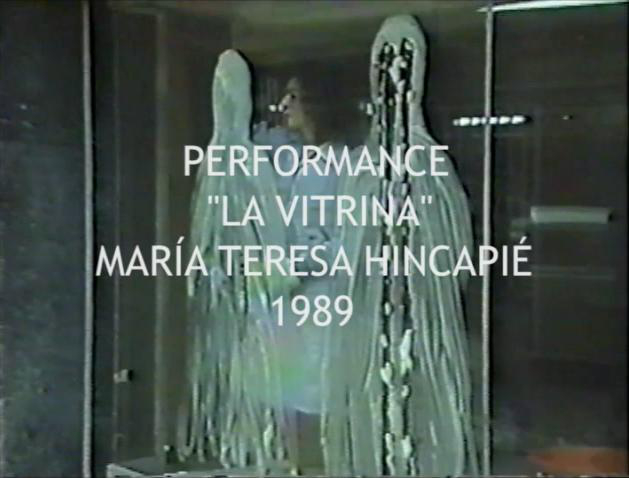
© » KADIST
María Teresa Hincapié
In the performance video Vitrina , María Teresa Hincapié stood inside a storefront window in downtown Bogota, unannounced, for eight hours a day, wearing a uniform and initially carrying out cleaning chores. As the day and passers went by, the routine became more playful: she would send kisses to bus drivers on the busy Avenida Jiménez who would return them, use the newspaper with which she was shining the glass to flirtatiously hide and engage with an improvised audience or draw the shape of her body with soap and a sponge. She would interrupt these chores to carry out other ‘feminine’ activities, like brushing her hair or applying make-up, only to return to frantically cleaning the transparent surface that separated her from the public.
Marion Scemama, David Wojnarowicz
Marion Scemama is a French photographer and filmmaker...
Mariana Castillo Deball
- location: Amsterdam & Berlin
- year born: 1975
- gender: female
- nationality: Mexican
- home town: Mexico City, Mexico
Martin Kippenberger
- location: Vienna, Austria
- year born: 1953
- gender: male
- nationality: German
- home town: Dortmund, Germany
Diego Marcon
Diego Marcon uses film, video and installation to investigate the ontology of the moving image, focusing on the relationship between reality and representation...
Martin Creed
- location: Wakefield, United Kingdom
- year born: 1968
- gender: male
- nationality: British
Daria Martin
A number of Daria Martin’s films explore the relationship between humans and machines and make reference to modernist art, whether through the work of the Bauhuas (Schlemmer), Surrealism (Giacometti’s Palace at 4 AM) or American art of the 1960s and 1970s...
Marwa Arsanios
Marwa Arsanios is born in 1978 in Washington, United-States...
Maria Taniguchi
Throughout her paintings, sculptures, and videos, Maria Taniguchi unpacks knowledge and experience—connecting material culture, technology, and natural evolution—and investigates space and time, along with social and historical contexts...
Marwan Rechmaoui
- location: Bayrut, Al-Lubnan
- year born: 1964
- gender: male
- nationality: Lebanese
Maria Fernanda Plata
Colombian artist Maria Fernanda Plata found herself drawn to fabric as a material with conceptual implications while on a residency in Vietnam...
Marlon de Azambuja
Based on ideas of architecture, and by means of appropriation of public space and studio-based material operations, Marlon de Azambuja’s work creates new idioms for thinking and inhabiting the built environment...
Maryam Hoseini
Maryam Hoseini makes delicate, figurative paintings to investigate the political, social, and personal conditions of identity and gender...
Maria Bussman
Maria Bussmann’s works represent an insistent attempt to fathom the epistemological quality of her medium, drawing...
Maayan Amir and Ruti Sela
Maayan Amir and Ruti Sela, two young Israeli women artists work collaboratively or individually by project...
Karan Shrestha
Karan Shrestha’s practice portrays the social tensions and historical complexities embodied in the social fabric of Nepal...
Marina Rosenfeld
Marina Rosenfeld is a New York-based composer and artist working across disciplines...
Olive Martin and Patrick Bernier
Patrick Bernier and Olive Martin are a duo of artists collaborating since 1999...
Michael Craig-Martin
Michael Craig-Martin studied fine art at Yale University returning to Europe in the mid-1960s and becoming one of the key figures in the first generation of British conceptual artists...
Uri Aran
Born in 1977 in Jerusalem Lives and works in New York...
Martin Boyce
- location: Hamilton, United Kingdom
- year born: 1967
- gender: male
- nationality: British
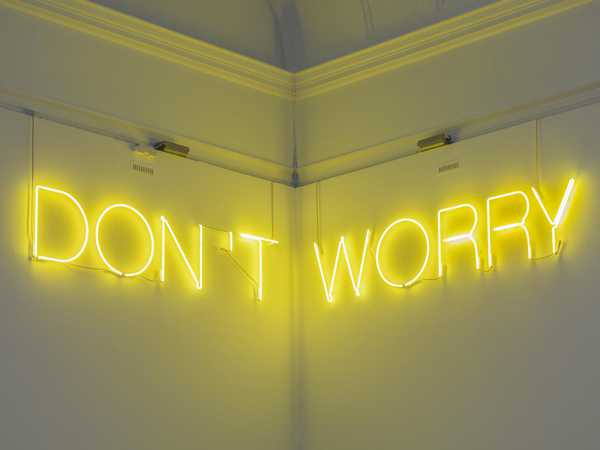
© » TATE EXHIBITIONS
about 4 months ago (01/06/2024)
Martin Creed | The Dick Institute Experience the work of one of this country’s most ingenious, audacious and surprising artists at the Dick Institute ARTIST ROOMS Martin Creed presents highlights from the British artist’s thirty-year career...
-
1980-1989
Martin Kippenberger
1988Martin Kippenberger’s late collages are known for incorporating a wide range of materials, from polaroids and magazine clips to hotel stationery, decals, and graphite drawings...
Martin Kippenberger
Drawing & Print
1989(Drawing & Print) 7″ Single ‘Pop In’ by Martin Kippenbergher consisting of a vinyl record and a unique artwork drawn by the artist on the record’s sleeve...
Martin Kippenberger
Drawing & Print
1989(Drawing & Print) Untitled is a work on paper by Martin Kippenberger comprised of several seemingly disparate elements: cut-out images of a group of dancers, a japanese ceramic vase, and a pair of legs, are all combined with gestural, hand-drawn traces and additional elements such as a candy wrapper from a hotel in Monte Carlo and a statistical form from a federal government office in Wiesbaden, Germany...
Marion Scemama, David Wojnarowicz
1989Political artist, painter, writer, performer, photographer, David Wojnarowicz, was one of the leading figures of the New York Downtown artistic scene of the 1980s...
Marion Scemama, David Wojnarowicz
1989Political artist, painter, writer, performer, photographer, David Wojnarowicz, who died of AIDS in 1992 in New York City, was one of the leading figures of the New York Downtown artistic scene of the 80s...
Marion Scemama, David Wojnarowicz
1989Political artist, painter, writer, performer, photographer, David Wojnarowicz, who died of AIDS in 1992 in New York City, was one of the leading figures of the New York Downtown artistic scene of the 80s...
Marion Scemama, David Wojnarowicz
1989Political artist, painter, writer, performer, photographer, David Wojnarowicz, who died of AIDS in 1992 in New York City, was one of the leading figures of the New York Downtown artistic scene of the 80s...
María Teresa Hincapié
1989In the performance video Vitrina , María Teresa Hincapié stood inside a storefront window in downtown Bogota, unannounced, for eight hours a day, wearing a uniform and initially carrying out cleaning chores...
Marion Scemama, David Wojnarowicz
1989Political artist, painter, writer, performer, photographer, David Wojnarowicz, who died of AIDS in 1992 in New York City, was one of the leading figures of the New York Downtown artistic scene of the 80s...
-
2000-2009
Martin Creed
2003This photograph of Martin Creed himself was used as the invitation card for a fundraising auction of works on paper at Christie’s South Kensington in support of Camden Arts Centre’s first year in a refurbished building in 2005...
Martin Boyce
2003In the installation Our Love is like the Flowers, the Rain, the Sea and the Hours, Martin Boyce uses common elements from public gardens – trees, benches, trashbins– in a game which describes at once a social space and an abstract dream space...
Maayan Amir and Ruti Sela
2003In Beyond Guilt the two artists create a portrait of our generation in three parts...
Daria Martin
2004Soft Materials is a curious, touching but also disturbing sequence of confrontations between two people: a man and a woman, and machines...
Maria Bussman
Drawing & Print
2005(Drawing & Print) The drawing “Heidegger’s Cabin” (2005) is inspired by Martin Heidegger’s essay, “The Origin of the Work of Art.” During the artist’s stay in a high alpine area, near a lake reservoir, Bussmann related the landscape in her surroundings to her reading of Heidegger’s terms on the work of art and the meaning of a “thing.” In attempt to link spiritual heights to natural heights, Bussmann metaphorically relates the subjects of being and truth to a hiking path, and its different degrees of challenge and risk...
Marwa Arsanios
2008Carlton Hotel project is the second part of a research on the Carlton, an iconic building of modernist architecture from the 1960s in Beirut...
Daria Martin
2008In keeping with her mythological proclivity, Minotaur (2009) casts a new light on an old narrative...
Mariana Castillo Deball
2009Do ut des (2009) is part of an ongoing series of books that Castillo Deball has altered with perforations, starting from the front page and working inward, forming symmetrical patterns when each spread is opened...
-
2010-2019
Olive Martin and Patrick Bernier
2010The Mohawk, the emblematic Frontier river in the period of American colonisation, is here a cable of data transmission, and the 7 Sultans Casino is a virtual destination, one of the three hundred online casinos hosted by the servers located in Kahnawake, a small native american indian reserve to the south of Montreal...
María Buenaventura
2011The Territory is not for sale is a process of reflection and research with people, thinkers and community leaders from Usme, a rural part of Bogotá on the tenuous verge of becoming urban...
Nicholas Mangan
2012Executed in 2012, A World Undone revolves around a single, metaphorically rich substance, drawing on geological research into an ancient mineral, Zircon, unearthed in remote Western Australia...
Maria Taniguchi
2012Untitled (Celestial Motors) is a visual meditation on an icon of modern urban Philippine life—the jeepney...
Diego Marcon
2015The video animation Falling Head 2 , hand-painted by Diego Marcon in 2015, consists of a close-up of a head caught on the threshold between sleep and wakefulness or maybe from wakefulness to sleep...
Mariana Castillo Deball
2015Taking archaeology as her departure point to examine the trajectories of replicated and displaced objects, “Who will measure the space, who will tell me the time?” was produced in Oaxaca for her exhibition of the same title at the Contemporary Museum of Oaxaca (MACO) in 2015...
Maria Taniguchi
2015Maria Taniguchi works across several media but is principally known for her long-running series of quasi-abstract paintings featuring a stylized brick wall device...
Maria Fernanda Plata
2015Unraveling, or “unweaving” sections of fabric, Maria Fernanda Plata arrived at delicate and tenuous-looking forms, both ghostly and gentle...
João Maria Gusmão and Pedro Paiva
2015The artist duo João Maria Gusmão and Pedro Paiva traveled to Japan for a month to make a series of short 16mm films, often shot in slow-motion...
Diego Marcon
2017Monelle by Diego Marcon was filmed at night inside the infamous Casa del Fascio, the headquarters of the local Fascist Party in Como Italy, designed by Giuseppe Terragni under Mussolini’s rule...
Karan Shrestha
2017After the decade-long conflict (1996-2006) that ended with Nepal becoming a Federal Democratic Republic, political unrest and weak governance continued to mark the country’s future as daily life repeatedly witnessed ruptures...
Marlon de Azambuja
2017Following a series of related works, Brutalismo Americano by Marlon de Azambuja is a site-specific sculptural installation produced during the artist’s residency at Kadist, San Francisco in 2017...
Maryam Hoseini
2019Secrets Between Her and Her Shadow 10 by Maryam Hoseini is from a series of paintings of the same title that are inspired by the story Layla and Majnun – an Arabic love story about Majnun, a 7th century Bedouin poet, and his lover, Layla...
Marina Rosenfeld
2019The installation Music Stands: Free Exercise 7, 8, and 9 by Marina Rosenfeld consists of music stand-like structures and a corresponding set of panels and acoustic devices that direct, focus, obstruct, reflect and project sound in the gallery...
Ana María Millán
2019Interested in role-play and videogames, Ana María Millán developed workshops with different communities in order to create characters and scenarios for her animations, often in collaboration with a choreographer...
-
2020-2029
Marwan Rechmaoui
Drawing & Print
2021(Drawing & Print) Throughout his career, Marwan Rechmaoui has maintained a drawing practice...
Marwan Rechmaoui
Drawing & Print
2021(Drawing & Print) Throughout his career, Marwan Rechmaoui has maintained a drawing practice...



